Pete Sutton's Blog, page 23
July 22, 2016
Reviews - Bleakwarrior, Sparrow Falling & Zen in the art of writing
3 reviews
In no particular order
Zen in the Art of Writing
By Ray Bradbury
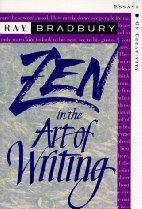
Bradbury is instantly recognisable of course and a book of essays from him, his thoughts on the craft, of much interest. However it is a bit of a mixed bag, as the essays have been written over a long period of time and there is quite a lot of repetition. When he's good he's very very good, but often he's mediocre. At the end of the book are a set of poems, which was a little unexpected.
Essays like - 'How to keep and feed a muse" and "On the shoulders of giants" were of most interest. I could see that if you were a big fan, getting an insight on how he developed the ideas that became Dandelion Wine, or Fahrenheit 451 would also be great reads, but I was less interested in them.
Overall - a so-so book about writing, one for the fans
Sparrow Falling by Gaie Sebold
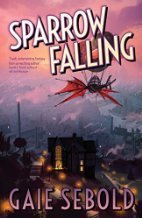
Make no mistake you need to have read the first book to get the most from this, the second in the series. However, although there is no precis of the former I was soon back into the swing of Sebold's Dickensian steam and gas London. This is more a function of being back with instantly recognisable characters like fox-spirit Liu, the brilliant Ma Pether and, of course, Evvie Sparrow herself.
In this installment the plot revolves around the school and an unsavory sort called Stug. When Evvie suspects Stug of doing something wicked with the children of families he houses as a slum landlord she becomes embroiled in the workings of the Fair Folk.
There is plenty here to enjoy, I wish Sebold had done more with the flying machine (although I'm guessing she's setting that up for next time) and the plot charges you along without you really noticing. Until the last few pages are gripped and released.
Overall - Thoroughly entertaining steampunk
Bleakwarriror by Alistair Rennie
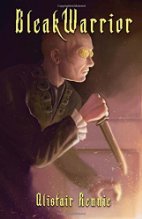
"The Folly of Brawl is a tower of disproportionate girth, besmirched at the base with festering lichens and nettled clumps" - so starts one of the most idiosyncratic books I've read for a while. Bleakwarriror is a metaphysical romp disguised as swords and sorcery disguised as a metaphysical romp.
The Bleakwarrior of the title is a meta-warrior - a 'physical expression of natural states that serve no purpose beyond their immediate function.' a wandering masterless killer seeking his purpose. Each dense chapter is stuffed full of memorable characters (all the meta-warrirors are great, it's a real shame when some of them kill others because some deserve larger parts) and along the way he is helped or hindered (mostly hindered) by others of his kind.
This is foot to the metal, balls-out, foaming at the mouth prose and yet at the same time lush dense verbiage that deserves to be fondled and savoured. How Rennie achieves such a dichotomy is beyond me. This is not for the squeamish or prudish - there is much gratuitous violence and even more gratuitous sex. It is also a book that you need to put your brain in another gear before reading - but what a pleasure it is once you are on the same plane.
This is like Hunt Emerson meets Gormenghast. Very much in the weird and very much a book that defies quick review.
So please make your way to the nearest convenient source of books and purchase a copy
If you are still not convinced read this great review which does it more justice than I ever could.
Overall - Highly recommended but treat with approrpiate care, it's not an easy book but it is a good one
In no particular order
Zen in the Art of Writing
By Ray Bradbury

Bradbury is instantly recognisable of course and a book of essays from him, his thoughts on the craft, of much interest. However it is a bit of a mixed bag, as the essays have been written over a long period of time and there is quite a lot of repetition. When he's good he's very very good, but often he's mediocre. At the end of the book are a set of poems, which was a little unexpected.
Essays like - 'How to keep and feed a muse" and "On the shoulders of giants" were of most interest. I could see that if you were a big fan, getting an insight on how he developed the ideas that became Dandelion Wine, or Fahrenheit 451 would also be great reads, but I was less interested in them.
Overall - a so-so book about writing, one for the fans
Sparrow Falling by Gaie Sebold

Make no mistake you need to have read the first book to get the most from this, the second in the series. However, although there is no precis of the former I was soon back into the swing of Sebold's Dickensian steam and gas London. This is more a function of being back with instantly recognisable characters like fox-spirit Liu, the brilliant Ma Pether and, of course, Evvie Sparrow herself.
In this installment the plot revolves around the school and an unsavory sort called Stug. When Evvie suspects Stug of doing something wicked with the children of families he houses as a slum landlord she becomes embroiled in the workings of the Fair Folk.
There is plenty here to enjoy, I wish Sebold had done more with the flying machine (although I'm guessing she's setting that up for next time) and the plot charges you along without you really noticing. Until the last few pages are gripped and released.
Overall - Thoroughly entertaining steampunk
Bleakwarriror by Alistair Rennie

"The Folly of Brawl is a tower of disproportionate girth, besmirched at the base with festering lichens and nettled clumps" - so starts one of the most idiosyncratic books I've read for a while. Bleakwarriror is a metaphysical romp disguised as swords and sorcery disguised as a metaphysical romp.
The Bleakwarrior of the title is a meta-warrior - a 'physical expression of natural states that serve no purpose beyond their immediate function.' a wandering masterless killer seeking his purpose. Each dense chapter is stuffed full of memorable characters (all the meta-warrirors are great, it's a real shame when some of them kill others because some deserve larger parts) and along the way he is helped or hindered (mostly hindered) by others of his kind.
This is foot to the metal, balls-out, foaming at the mouth prose and yet at the same time lush dense verbiage that deserves to be fondled and savoured. How Rennie achieves such a dichotomy is beyond me. This is not for the squeamish or prudish - there is much gratuitous violence and even more gratuitous sex. It is also a book that you need to put your brain in another gear before reading - but what a pleasure it is once you are on the same plane.
This is like Hunt Emerson meets Gormenghast. Very much in the weird and very much a book that defies quick review.
So please make your way to the nearest convenient source of books and purchase a copy
If you are still not convinced read this great review which does it more justice than I ever could.
Overall - Highly recommended but treat with approrpiate care, it's not an easy book but it is a good one
Published on July 22, 2016 04:42
July 6, 2016
Review - Silence Rides Alone by Charles Millsted
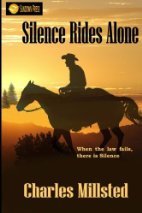
In the 70's & early 80's there were always Westerns on TV, along with repeats and old B&W movies, especially Laurel & Hardy. But I grew up watching a variety of Westerns, including Bonanza, Maverick and an endless repeat of John Wayne, John Ford and other western films. Later I graduated to Clint Eastwood and the Spaghetti Westerns and films like Unforgiven.
Millsted's book is more in the vein of my earlier viewing and therefore a nice nostalgic read. The book opens with the Nussbaums doing what many have done before, going west in a covered wagon. When the wagon is attacked our eponymous hero arrives on the scene to help Manny Nussbaum find out who and why his family were attacked.
Silence has his own grief from past tragedy and when their investigations cross there is hell to pay.
Millsted does well to build the characters quickly, with a memorable supporting cast including a military intelligence officer confined to a wheelchair and a gunman in the Lee Van Cleef mould called Van Hook. Corrupted officials, ranch owners and their daughters, saloon whores etc. The plot whizzes along gathering steam until the final very memorable showdown.
This has everything you want from a western, and I highly recommend it
Published on July 06, 2016 01:08
June 27, 2016
Publication week
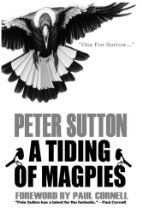
On Tuesday A Tiding of Magpies will go on sale on Amazon (the eBook is already available) and on Thursday there'll be a launch event in Bristol at 7pm at St John-in-the-wall - there will be readings & music & free booze
Te other book being launched at the same event is Silence Rides Alone by Charles Millstead (Bristol writer Ian Millstead pseudonymously)

Published on June 27, 2016 00:30
June 20, 2016
Rogue -not a book, but great writing nonetheless

OK so I came to Rogue late, the first series aired in 2013 and I've only just watched it. If, like me, you missed this until now it is a Canadian-British TV show set in San Francisco starring Thandie Newton. Newton plays Grace Travis, an undercover cop embedded in Jimmy Lazlo's Mafia-style organised crime organisation. Her son is killed in a drive-by shooting and Grace sets out to uncover the killer, who seems to be linked to Jimmy's crime empire.
The first series has 10 episodes and the first couple are OK, they are entertaining enough and set up the premise well. Then the characters start to come alive and by episode 7 it becomes a must-watch. And yet. The Wikipedia page states - "Rogue has received mixed reviews. Review aggregator site, Metacritic, has given the first season a "mixed or average" score of 47 out of 100, based on 14 critics.[5]On another review aggregator site, Rotten Tomatoes, it holds a 38% rating with an average rating of 4.9 out of 10, based on eight reviews" I don't know about series two as yet, only just started watching that one.
Why is this if I loved this show so much? Many of the reviews by people who also liked it say "give it more than 3 episodes" or "it's a slow burn" so maybe it has a pacing problem. There are accusations of it not being "real" mainly based on Newton's character being too skinny to be a cop (I kid you not). And, the main one I'll address, that it is too dark.
Series one is a tragedy. It is a story about revenge versus justice. Character arcs tend towards downward spirals. It's 'gritty' (several reviews are negative about the swearing and nudity) and it examines a grubby subject. The cinematography is deliberately dark and the tone is not, to be blunt, happy.
But as a character study it is compelling and well written and although the first few episodes may feel a little slow they do an amazing job of setting up the payoff later in the series. I think it's worth watching. But what do I know, a lot of shows I like get cancelled...
Published on June 20, 2016 01:47
June 17, 2016
Review - Neil Williamson's Secret Language
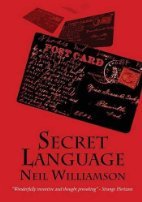
I thoroughly enjoyed The Moon King, Williamson's novel published in 2014 and eagerly awaited more from the author. So when I saw that he was bringing out a collection of shorts I jumped at the chance to grab an ARC in return for a review. Sadly my own writing has mean that this review is coming slightly later than planned, but not because I had any problems with the book, just purely time to put my thoughts in order.
Williamson says that he was obsessed with secret languages as a child and some of that has obviously bled into his prose. No more than in The secret language of stamps a very effective and menacing tale about stamp collecting. He also mentions that he's a musician and music plays in the background of many of his stories and takes centre stage for stories such as Arrhythmia which was shortlisted for the BSFA award.
But there is much more to enjoy with these stories than these obvious notes. Williamson has a knack for effective prose and le mot juste and for that alone his stories are a pleasure to read. However it is in the realm of ideas that any true writer of speculative fiction will be judged, and if this collection is anything to go by Williamson passes judgement, with flying colours.
I think my favourite in this collection if I can be so crass to pick a favourite amongst so many quality stories, is Lost Sheep. With a few deft swipes of the writing brush Williamson conjures an entire universe. And you don't see many stories that feature a spaceship full of ruminant nuns!
I enjoyed it so much I'm going to buy it in hard copy. If Williamson is speaking a secret language it is one that resonates, surprises and entertains and one that it would be worth your while learning by picking up a copy.
Recommended.
Published on June 17, 2016 07:59
May 26, 2016
Guest post - Paul Cornell
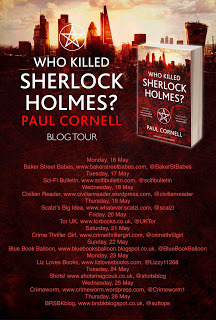
Who Killed Sherlock Holmes? is published by TOR UK on 19/07/2016 TOR.
[image error]
Paul Cornell has been Hugo-nominated for his work in TV, comics and prose, and is a BSFA award-winner for short fiction. He has also written some of Doctor Who’s best-loved episodes for the BBC, and has more recently written for the Sherlock-inspired TV show Elementary , starring Jonny Lee Miller and Lucy Liu. He lives in Gloucestershire. Find out more www.paulcornell.com and @paul_cornell.
Paul has dropped by to talk about his new book:

The exciting thing about using both real London lore and 'real' occultism in my Shadow Police books is that real detail often provides a flavour which made-up detail lacks. It's as if a point about actual occult practice that one has found in research rather than one that's been dreamed up has already been through some evolutionary sifting, and has found to be fit enough to continue as part of London's retold mythology. I'm sure that a skilled writer is capable of roughing up the edges of any fact to the point where it feels fractal enough to pass muster as genuine, but human beings are very good at spotting when an idea has been lived in for a while. So one might as well do the research and snap up any gems missed by previous urban fantasists. Unfortunately, I also think 'for a while' isn't actually very long, which is why much of what passes for British pagan history only goes back as far as the 19th Century. The British seem very prone to deciding that some folk artist's decision to wear horns for a parade in 1922 must indicate a surviving tradition from before Roman times. The Irish certainly have some of those. We can't honestly put our hands up for any. It's as if people can tell when a fact is newly-forged, but then love to use their own storytelling skills to swiftly age it.
 I have some personal experience in these matters, having been a Wiccan in my college years. I'd recommend it to anyone. These days I'm more mainstream in my religious impulses, but I still love that collection of practices and beliefs, thrown together as it was in a very shall we say, Anglican, way? So while my atheist police officer who's attempting to understand magic, Kev Sefton, is very different to me in some ways, he has that central interest that connects me to him. My central characters each have a different relationship to the dark magic of London, from DI Quill's exhausted desire to shove it into normal police practice, to DS Costain's almost puritan fear of what it might mean for his dodgy ways, to Lisa Ross feeling that she's been wading in this stuff from before she knew what it was.
I have some personal experience in these matters, having been a Wiccan in my college years. I'd recommend it to anyone. These days I'm more mainstream in my religious impulses, but I still love that collection of practices and beliefs, thrown together as it was in a very shall we say, Anglican, way? So while my atheist police officer who's attempting to understand magic, Kev Sefton, is very different to me in some ways, he has that central interest that connects me to him. My central characters each have a different relationship to the dark magic of London, from DI Quill's exhausted desire to shove it into normal police practice, to DS Costain's almost puritan fear of what it might mean for his dodgy ways, to Lisa Ross feeling that she's been wading in this stuff from before she knew what it was. 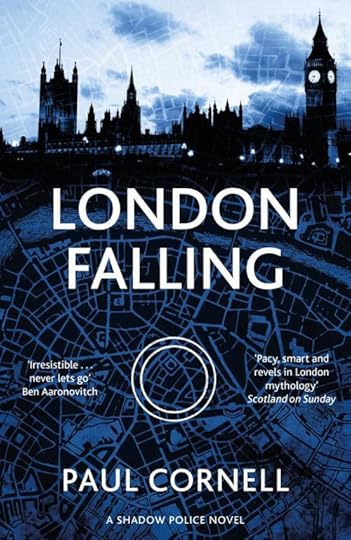 In Who Killed Sherlock Holmes?, the third book in the series, out now, our heroes find one of the 'ghosts' that London remembers into life, this being the fictional character Holmes, lying seemingly 'dead' in the Museum at 221b Baker Street, where Londoners feel he should always be found. They have to work out what it means to kill a ghost, why Holmes was targeted, and if it has anything to do with three different versions of Holmes being filmed in the city at the same time, or with a spate of crimes where the deeds of the Conan Doyle short stories are being re-enacted. Brought to bear is some fond satire of the modern Holmes industry, but along the way we once again trip over a lot of London lore and occult practice, some of which is 'real'. All of it, however, is true.
In Who Killed Sherlock Holmes?, the third book in the series, out now, our heroes find one of the 'ghosts' that London remembers into life, this being the fictional character Holmes, lying seemingly 'dead' in the Museum at 221b Baker Street, where Londoners feel he should always be found. They have to work out what it means to kill a ghost, why Holmes was targeted, and if it has anything to do with three different versions of Holmes being filmed in the city at the same time, or with a spate of crimes where the deeds of the Conan Doyle short stories are being re-enacted. Brought to bear is some fond satire of the modern Holmes industry, but along the way we once again trip over a lot of London lore and occult practice, some of which is 'real'. All of it, however, is true. Go check out the first two books if you haven't already - and get ordering Who Killed Sherlock Holmes
Published on May 26, 2016 00:41
May 25, 2016
Guest Post - Helen Callaghan
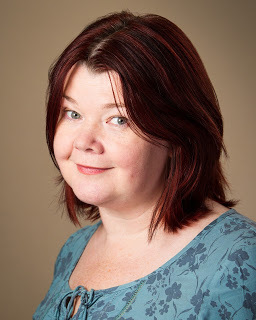
Helen Callaghan was born in California to British parents and her early years were spent in both the US and UK.
After several early jobs as barmaid, drama student, and nurse, she settled into bookselling, and worked as a fiction specialist and buyer for Athena Bookshop, Dillons and Waterstones over the next eight years. Eventually, she studied for her A-levels at night school and achieved a place at Cambridge University, reading Archaeology at Wolfson College.
She has published two local history books: Prestwich In Old Photographs and Cambridge University In Old Photographs for Alan Sutton Publications. She now runs her own business writing technical documentation.
Her interests include medieval cookery, hiking, running, and travel. She is fascinated by the past, and can frequently be found haunting ancient monuments, taking pictures of them with her mobile phone. She blogs about these enthusiasms on www.helencallaghan.co.uk.
Helen lives in Cambridge. Dear Amy is her first novel.
Helen has dropped in to talk about her forthcoming novel - Dear Amy
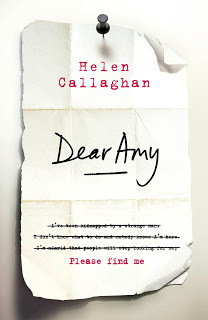
So for the first time in years I’m writing crime - my forthcoming novel, Dear Amy, is a psychological thriller set in Cambridge. In it Margot Lewis, a Classics teacher in an upmarket private school and part-time agony aunt for the local paper, receives letters from a girl who has been kidnapped nearly twenty years previously and has been presumed dead and starts to investigate them.
Dear Amy is a departure for me - or rather, a re-departure, as a version of this novel was the first full-length piece of fiction I ever finished, when I was 21. For most of my life, I’ve written science fiction - such as Mephistophela, the near future heist thriller that got me my agent, and Sleepwalker, the sprawling on-off love of my life set in a multiplicity of alternate universes.
The novels attracted some lovely remarks but never sold to publishers - Mephistophela was a victim of the shaky financial times in publishing around 2009, when nobody was sure if print publishing still had a future and in 2013 Sleepwalker had been admired but was considered too vast and labour-intensive for a debut.
I received this news in the cafe at the London Review of Books bookshop near the British Museum. My agent asked me if I had anything else in train, and I remembered Dear Amy, or Bethan Avery as it was called at the time - this being the name of the missing girl at the centre of the mystery. We talked about it, and decided that I would rework it over the next six weeks and she’d take a look at it.
Well, it wasn’t six weeks. I opened up the old DOC files for the first time in a decade and immediately realised that the whole thing would need completely rewriting.
The biggest difference between crime and speculative fiction is that crime is inherently more conservative (with a small c. And sometimes a big C, but hey-ho - you can say that about SF, fantasy, horror and romance too). In speculative fiction the world expands, spilling out past the borders of the quotidian. Stories are set either in completely new worlds, each with their own set pieces and idiosyncrasies, or if they are based in this world there is a hidden or contrasting world existing in juxtaposition with it.
In crime writing, a world where borders are already forced open and transgressions have taken place is returned to equilibrium. In that sense, the goal is to make the world became flatter, smaller, and safer - to ensure that the wilderness that exists even in the most built-up of cities is banished. A return to justice is a return to balance and order.
These preoccupations reach out into the writing itself. In speculative fiction, one can (and indeed is forced to) describe more boldly, to draw pictures in the air, to invoke wonder as one summons the unseeable - it requires more figurative writing. In crime, realism and atmosphere are the rule. Small details are what the plot hinges upon and must be presented precisely.
It’s actually a different way of doing fiction, and again and again I found myself revisiting my work, trying to winkle out the particular virtues that would let it shine in this new genre outing. I changed the location from Manchester to Cambridge, with its evocative colleges and haunted fens, I altered the nature of the antagonist, I cast the protagonist’s miserable past into something less hysterically melodramatic.
A year later the book sold at auction, so something must have gone right. I suppose the question I often ponder is whether my speculative fiction training was ultimately a help or hindrance to its uptake, and to be honest I’m still not sure. I suppose that the best I can hope for is that people enjoy the book when it comes out June 16th.
You can read an extract here
BRSBBLOG highly recommend this book - please check it out, and pre-order a copy...
Published on May 25, 2016 01:14
May 24, 2016
Reviews - Crime triple bill
It's a bit of a coincidence but in the week leading up to Crimefest I read three (very different from each other) crime books:
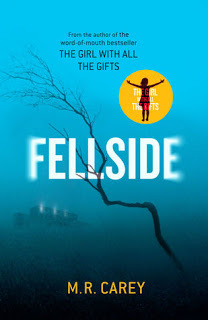
Fellside by M.R. Carey
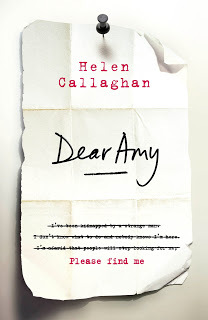
Dear Amy by Helen Calleghan
and
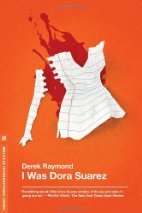
I was Dora Suarez by Derek Raymond
Fellside is a book set in a women's prison and has a supernatural bent. Dear Amy is about a missing girl and is a psychological thriller and I was Dora Suarez is a deep black noir - the three books are tonally different from each other. But each very good.
Fellside - The Fellside of the title is a maximum security women's Titan prison in Northern England. Jess Moulson sets a fire to kill her abusive boyfriend and instead kills a little boy and is sent down for murder. When she reaches prison she decides to take her own life, in the only method available, by hunger strike. However the ghost of the little boy she killed will not let her take that easy escape.
Carey is a master of pace with each sentence, each paragraph, each page, each chapter a hook that pulls you through the story. It's really rather marvelous to experience. This is a page-turner and I devoured it.
It reminded me a little of Carey's first Felix Castor book with a ghost seeking resolution and the main character seeking redemption. But it's of a different flavour to that book. Jess is a compelling lead and the cast of characters are well set up and well drawn, and believable.
In Dear Amy, another book with a female protagonist, Margot Lewis, an agony aunt receives a letter from a girl who had gone missing assumed abducted many years ago, which leads her down a very long dark rabbit hole indeed. Callaghan has created a taut thriller full of entertaining turns as Margot follows the clues as to how she could possibly be receiving these letters from someone presumed dead for years.
This is an impressive debut and I suspect that Callaghan is going to be huge. This deserves a large readership and I heartily recommend it to anyone who likes thrillers.
I also am very happy to say that I have a blog piece from the author - coming up next post...
Whilst it doesn't have a female protagonist I was Dora Suarez would be both incomplete without the voice of the victim and poorer. With one of the most brutal, and effective openings to a book I've ever read this immediately alerts you that this is an author that is going to paint with a palette of darkness.
Part of the Factory series, but standalone, this follows the investigation of a brutal axe murder by an unnamed Detective Sergeant who falls in love with the dead girl. The fact that the girl was dying of AIDS before the murder adds a level of poignancy to what could otherwise be a salacious crime novel.
As a dark reflection of Thatcher-era Britain, in a filth-encrusted mirror, it is a deeply disturbing read. It is also a darkly compelling tale.
I don't often read crime, but my foray into the genre has been interesting. I highly commend all three books.
Now I'm off to read E M Forster's A Room with a View to take a break...

Fellside by M.R. Carey

Dear Amy by Helen Calleghan
and

I was Dora Suarez by Derek Raymond
Fellside is a book set in a women's prison and has a supernatural bent. Dear Amy is about a missing girl and is a psychological thriller and I was Dora Suarez is a deep black noir - the three books are tonally different from each other. But each very good.
Fellside - The Fellside of the title is a maximum security women's Titan prison in Northern England. Jess Moulson sets a fire to kill her abusive boyfriend and instead kills a little boy and is sent down for murder. When she reaches prison she decides to take her own life, in the only method available, by hunger strike. However the ghost of the little boy she killed will not let her take that easy escape.
Carey is a master of pace with each sentence, each paragraph, each page, each chapter a hook that pulls you through the story. It's really rather marvelous to experience. This is a page-turner and I devoured it.
It reminded me a little of Carey's first Felix Castor book with a ghost seeking resolution and the main character seeking redemption. But it's of a different flavour to that book. Jess is a compelling lead and the cast of characters are well set up and well drawn, and believable.
In Dear Amy, another book with a female protagonist, Margot Lewis, an agony aunt receives a letter from a girl who had gone missing assumed abducted many years ago, which leads her down a very long dark rabbit hole indeed. Callaghan has created a taut thriller full of entertaining turns as Margot follows the clues as to how she could possibly be receiving these letters from someone presumed dead for years.
This is an impressive debut and I suspect that Callaghan is going to be huge. This deserves a large readership and I heartily recommend it to anyone who likes thrillers.
I also am very happy to say that I have a blog piece from the author - coming up next post...
Whilst it doesn't have a female protagonist I was Dora Suarez would be both incomplete without the voice of the victim and poorer. With one of the most brutal, and effective openings to a book I've ever read this immediately alerts you that this is an author that is going to paint with a palette of darkness.
Part of the Factory series, but standalone, this follows the investigation of a brutal axe murder by an unnamed Detective Sergeant who falls in love with the dead girl. The fact that the girl was dying of AIDS before the murder adds a level of poignancy to what could otherwise be a salacious crime novel.
As a dark reflection of Thatcher-era Britain, in a filth-encrusted mirror, it is a deeply disturbing read. It is also a darkly compelling tale.
I don't often read crime, but my foray into the genre has been interesting. I highly commend all three books.
Now I'm off to read E M Forster's A Room with a View to take a break...
Published on May 24, 2016 10:56
May 17, 2016
Guest Post - Steven Guscott
Steven J. Guscott is twenty-eight and has been writing stories since 2010. His first fantasy novel, The Book of Prophecy was published by Kristell-Ink in 2014 and he has had a selection of shorter pieces published too. His short story The Diary of the Frankensteins was featured in the charity anthology, Strange Tales from the Scriptorian Vaults. Due to the interest in this story Steven decided to expand the ideas and with the help of Sammy HK Smith this novella, The Diary of V. Frankenstein was created.
When not writing Steven enjoys reading and listening to audiobooks, spending time with his family and friends, and being way too obsessed with Frank Herbert’s Sci-Fi classic, Dune.
Steven has dropped in to talk about re-imagining the gothic
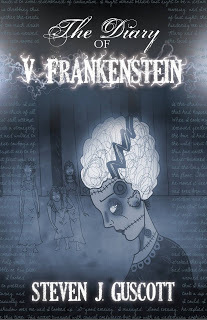
Re-Imaging the Gothic 2016
On May the 7th I had the joy of attending and showcasing my own work at Sheffield University’s event, Re-Imaging the Gothic: Monsters and Monstrosities.
At the beginning of the year I submitted my current novella, The Diary of V. Frankenstein in the hope they would be willing to have it, and me, as part of the event. They read the story and invited me to attend the event and give a presentation about the creative process of re-imaging a classic such as Mary Shelley’s Frankenstein.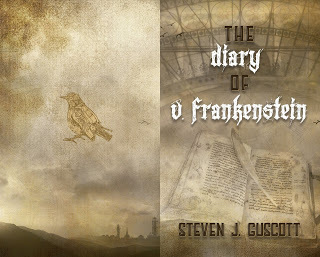 I arrived at the event, held at Sheffield Universities Humanities Research Institute building, and the organisers were incredibly welcoming. I set up the stall for the showcasing and had a chance to chat to a number of those running the event and those who were interested in The Diary of V.
I arrived at the event, held at Sheffield Universities Humanities Research Institute building, and the organisers were incredibly welcoming. I set up the stall for the showcasing and had a chance to chat to a number of those running the event and those who were interested in The Diary of V.
Frankenstein. I also got a chance to look at the other showcases and there was a lot much creativity and talent on display. For full list of all showcases, presentations and information on the event click the link at the bottom to Sheffield’s Gothic Reading Group blog. The blog will also have a post about the event and all that went on shortly so keep an eye out for that.
Throughout the day there were a number of other presentations on the events theme and I enjoyed every single one. I shouldn’t pick favourites, as they were all wonderful presentations on re-imaging the gothic, but I can’t help but give praise to the reading of Greg Flynn’s, ‘Humans of New Britain.’ The piece that was read was exceptionally well written and very passionate about current political, social and economic state of Britain at this time.
At 3pm I got the chance to give a presentation on the creative process of re-imagining the gothic and how it relates to the year’s theme of Monsters and monstrosities. To begin with I focused on what the theme monsters and monstrosities meant to me personally and how such ideas have bled into the creative process of writing, The Diary of V. Frankenstein. I then discussed how such a fantastic story as Frankenstein has sparked a thousand adaptations, and that to me it is the themes of holding a mirror up to ourselves and society that make people keep coming back to Frankenstein.
[image error] With this foundation built, I went on to discuss how my re-imagining began in 2010 with a simple thought of ‘What would happen if?’ at a certain point in the Frankenstein story. A year later my publishers helped me have the confidence to explore my ideas for their short story steampunk anthology, Strange Tales from the Scriptorian Vaults. Writing something that pays tribute to such an epic story is daunting, but we managed to piece it all together.
The short story gained some interest from readers and a friend of mine said she would love to see more about one of the characters. Another year later, while thinking what to write, I decided to turn the short story into a novella and explore that character and themes of monsters, equality and feminism more.
In my presentation I talked about how the publishers read it at the end of 2015 and agreed to publish it. It was a wonderful creative process with much learning on my part. During the editing process we came up with an extra layer to The Diary of V. Frankenstein and made two versions; one with the original Victor Frankenstein and one with Victoria Frankenstein- with all the male characters swapped with female and vice versa. I concluded with this and how the publishers had published the paperbacks and ebooks, but also the limited edition hardbacks where one set was the Victor version, and one the Victoria version. Lastly, I invited everyone to come speak to me about The Diary of V. Frankenstein if they wanted to know more.
There were a few more presentations after mine and for the rest of the event I chatted to people and got to relax a little now my presentation was over. The event was wonderful and a great way of mixing academic perspectives with a public audience. I really look forward to seeing what they do next year and returning as a member of the public and not showcasing/presenter. I highly recommend everyone keeping an eye on the gothic-lit blog and attending next year’s event. It was well organised and well presented event, so many thanks to Sheffield University Goth-Lit department for organising it.
[image error]
Steven’s Website: Information and purchase link for The Diary of V. Frankenstein and all his writing.www.stevenjguscott.com
Grimbold Publishing: A wide range of Fantasy and Sci-Fi Storieshttp://www.grimboldbooks.com/
Event blog:http://sheffieldgothicreadinggroup.bl...
When not writing Steven enjoys reading and listening to audiobooks, spending time with his family and friends, and being way too obsessed with Frank Herbert’s Sci-Fi classic, Dune.
Steven has dropped in to talk about re-imagining the gothic

Re-Imaging the Gothic 2016
On May the 7th I had the joy of attending and showcasing my own work at Sheffield University’s event, Re-Imaging the Gothic: Monsters and Monstrosities.
At the beginning of the year I submitted my current novella, The Diary of V. Frankenstein in the hope they would be willing to have it, and me, as part of the event. They read the story and invited me to attend the event and give a presentation about the creative process of re-imaging a classic such as Mary Shelley’s Frankenstein.
 I arrived at the event, held at Sheffield Universities Humanities Research Institute building, and the organisers were incredibly welcoming. I set up the stall for the showcasing and had a chance to chat to a number of those running the event and those who were interested in The Diary of V.
I arrived at the event, held at Sheffield Universities Humanities Research Institute building, and the organisers were incredibly welcoming. I set up the stall for the showcasing and had a chance to chat to a number of those running the event and those who were interested in The Diary of V. Frankenstein. I also got a chance to look at the other showcases and there was a lot much creativity and talent on display. For full list of all showcases, presentations and information on the event click the link at the bottom to Sheffield’s Gothic Reading Group blog. The blog will also have a post about the event and all that went on shortly so keep an eye out for that.
Throughout the day there were a number of other presentations on the events theme and I enjoyed every single one. I shouldn’t pick favourites, as they were all wonderful presentations on re-imaging the gothic, but I can’t help but give praise to the reading of Greg Flynn’s, ‘Humans of New Britain.’ The piece that was read was exceptionally well written and very passionate about current political, social and economic state of Britain at this time.
At 3pm I got the chance to give a presentation on the creative process of re-imagining the gothic and how it relates to the year’s theme of Monsters and monstrosities. To begin with I focused on what the theme monsters and monstrosities meant to me personally and how such ideas have bled into the creative process of writing, The Diary of V. Frankenstein. I then discussed how such a fantastic story as Frankenstein has sparked a thousand adaptations, and that to me it is the themes of holding a mirror up to ourselves and society that make people keep coming back to Frankenstein.
[image error] With this foundation built, I went on to discuss how my re-imagining began in 2010 with a simple thought of ‘What would happen if?’ at a certain point in the Frankenstein story. A year later my publishers helped me have the confidence to explore my ideas for their short story steampunk anthology, Strange Tales from the Scriptorian Vaults. Writing something that pays tribute to such an epic story is daunting, but we managed to piece it all together.
The short story gained some interest from readers and a friend of mine said she would love to see more about one of the characters. Another year later, while thinking what to write, I decided to turn the short story into a novella and explore that character and themes of monsters, equality and feminism more.
In my presentation I talked about how the publishers read it at the end of 2015 and agreed to publish it. It was a wonderful creative process with much learning on my part. During the editing process we came up with an extra layer to The Diary of V. Frankenstein and made two versions; one with the original Victor Frankenstein and one with Victoria Frankenstein- with all the male characters swapped with female and vice versa. I concluded with this and how the publishers had published the paperbacks and ebooks, but also the limited edition hardbacks where one set was the Victor version, and one the Victoria version. Lastly, I invited everyone to come speak to me about The Diary of V. Frankenstein if they wanted to know more.
There were a few more presentations after mine and for the rest of the event I chatted to people and got to relax a little now my presentation was over. The event was wonderful and a great way of mixing academic perspectives with a public audience. I really look forward to seeing what they do next year and returning as a member of the public and not showcasing/presenter. I highly recommend everyone keeping an eye on the gothic-lit blog and attending next year’s event. It was well organised and well presented event, so many thanks to Sheffield University Goth-Lit department for organising it.
[image error]
Steven’s Website: Information and purchase link for The Diary of V. Frankenstein and all his writing.www.stevenjguscott.com
Grimbold Publishing: A wide range of Fantasy and Sci-Fi Storieshttp://www.grimboldbooks.com/
Event blog:http://sheffieldgothicreadinggroup.bl...
Published on May 17, 2016 06:38
May 13, 2016
Interview with Jack Strange
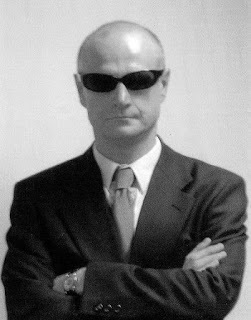
The reclusive author Jack Strange is an unusual fellow. His exact age is unknown. Those who've dared to ask him have never survived long enough to divulge the answer.
His writing is dark and comedic. He has a biting wit, an acid tongue, and some say hoofed feet. With his leaning towards the undead, he's a natural for the world of horror and gore.
Jack signed for Kensington Gore publishing in early 2016 in blood, no-one is sure whose.
We asked Jack a bunch of questions -
Jack Strange – author of ‘Celebrity Chef Zombie Apocalypse’

For anyone that hasn’t read them can you tell us a bit about your books
Hi Pete, thanks for interviewing me. So far I’ve only had one book published, a novel called ‘Celebrity Chef Zombie Apocalypse’. I say published; it’s due out on May 28.It’s a horror story with a sprinkling of satire and of course a large dollop of blood. I’m already writing a sequel (working title: ‘Zomcats’) I enjoy combining dark content with humour, so it’s likely that all my novels are going to be in the horror genre and have gross-out moments followed by lighter interludes.
Tell us a bit more about the last book you wrote
That’s ‘Celebrity Chef Zombie Apocalypse’. It’s about a dead celebrity chef called Floyd Rampant who is turned into a sex-crazed flesh-eating zombie when a scientist’s experiment, which is intended to raise him from the dead, goes wrong. Rampant realises that he’s the only zombie on the planet and he doesn’t have a chance against humanity, as the odds against him are 7 billion to one. He decides to recruit other celebrity chefs to the zombie cause to level up the odds, and he creates an army of celebrity chef zombies. Their aim is to enslave humanity and use people as ingredients for their cordon bleu dishes - which of course they eat with relish.
What did you learn about writing whilst writing the last book you wrote?
The same thing I always learn – that it’s not easy – it’s never easy!Having said that, I was fortunate with this one, because the words just flowed out of me, as if it was the book I was born to write. I finished the first draft unbelievably quickly – in just three months.But that’s when the work began. The real writing starts with the editing, and editing 78,000 words (the word count of my novel, give or take) was a massive undertaking.
I’d add (at risk of sounding pretentious) that all fiction writing involves exploring your own psyche. So, every time I write something, I learn a little bit more about myself; and perhaps even (at risk of sliding further down the slippery slope of pretention) a little bit about the human condition.
Do you have a set writing process, if so what is it?
Yes, very much so. I like to start with an interesting premise.In this particular case, my premise was that zombies could be intelligent.Then I posed the question: if they were intelligent, what would they do? They wouldn’t try to eat everyone and infect everyone, as that would mean that eventually the entire population of the world would be a zombie, and there’d be nothing left for them to eat. I decided that intelligent zombies would aim to enslave humanity and use people the way we use cattle – farm them for the dinner table, and in all probability, use some of them as slaves, as well.Anyway, when I’ve thought of the premise, I like to have a brainstorming session and come up with interesting ideas about where the premise could lead. What interesting scenes could develop from it?Finally, I sit down and do the hard part - writing!.
Do you write a lot of short stories?
I don’t write anything shorter than full-length novels.I have great respect for short-story writers, but it’s not for me.
Do you prefer the long or short form? How do you feel about Flash Fiction?
As a writer, I’m far more at home with the long form. As a reader, I’ll read anything, of almost any length. In my teens I read ‘Stand on Zanzibar’, and if memory serves me correct, that was a doorstep of a novel.Right now my reading matter includes ‘Jawbreakers’, a collection of flash-fictions; ‘Demise and other Macabre Endings’, a collection of short stories; and ‘The Final restoration of Wendel Pruce’, a novella.I made a point of reading one of your flash fictions a few weeks ago. (White Noise/Black Silence) It was about a prisoner in solitary confinement in a strange sterile cell. The image has stayed with me. It was hauntingly disturbing.
Which character in your books do you most identify with and why?
Samuel Johnson, the Prime Minister’s Aide. He has a habit of dropping sardonic comments into his conversations with the P.M. I make the odd sardonic comment myself – I hasten to add, Johnson isn’t me, or a ventriloquist’s dummy , or anything like that. He’s a real person in his own right.
Which bit of your writing are you most proud of?
I can’t really say too much about this, because it’d involve giving our readers plot spoilers.Let’s just say, it depicts a zombie chasing two people through the middle of a town. If you read the novel, you’ll identify immediately the scene I’m talking about when you get to it.
Tell us a bit about how you got published? Did you go via a slush pile? Get an agent before a publisher?
I got there via the publisher’s slush pile. I’ve sent submissions to agents in the past, and on four occasions they’ve requested the full MS. But they never made me offers to represent me, partly because I hadn’t mastered my craft at the time, and partly because my stories are too weird for most agents.
In one sentence what is your best piece of advice for new writers?
The same advice we’ve all been given by published authors: keep writing.I can’t stress how important sheer volume of output is to this game. You learn by doing. It’s the only way.
Please do check out the book - (a guest review below)
Celebrity Chef Zombie Apocalypseby Jack StrangeKensington Gore PublishingPublication date: May 28, 2016
Celebrity Chef Zombie Apocalypse is to pulp horror fiction what Gulliver's Travels is totravel writing or Moby-Dick to whale-watching. It is zombie-genre writing raised to anotherpower, and it results in a change of state.
The range, the scope, the satire, the dark laughter, the ambition - these distinguish JackStrange's book. It is head and shoulders above your average zombie fiction (though thehead is still distinguished by chopsticks in the eye sockets and perhaps even an axeembedded in the forehead).
Someone has said zombie novels are really all about social breakdown and a modernepidemic of alienation.
To this insight Jack Strange brings an hilarious biting commentary on Britain's peculiarNorth-south divide, the nation's two cultures, as distinct during Cameron's premiership asat any time during the last, oh, 100 years.
The centre-stage is occupied by celebrity chef Floyd Rampant and his fellow-zombiecreature, the feline Henderson.
Floyd Rampant is a larger-than-death character. The late great Terry Pratchett himselfwould perhaps not have been displeased to have invented Rampant. Henderson, his cat,is unfailingly entertaining in his unkillable exploits. (And by the way the transmogrificationof Sydney Bartholomew, a cat-bully bitten by Henderson in chapter 28, into a zombie-catis a comic gem.)
Rampant hopes to harness the forces of globalisation (via the conference-circuit) to turncelebrity chefs worldwide into zombies in order ultimately to establish a"Cookiphate" (geddit?) in which zombie chefs will dine to their unbeating hearts' content ona captive population - that of Kirklees in the North of England, as it turns out.Let me show you what I mean about the quality of this novel.
' "We know what you're up to, Rampant" said the PM. "We've seen your videos on theDark Web and we know all about your Clacton Cookiphate. We want you to know that wedon't have any objections to a Cookiphate in principle, so long as you don't try to take overthe entire country. But we can't really agree to your use of Clacton as the capital city ofyour Cookiphate. We're prepared to offer you Huddersfield instead." '
The depth and keenness of this satire is refreshing. Celebrity Chef Zombie Apocalypse attimes echoes the silver age of American pulp writing in the 1970s. Yet it is ascontemporary as a drone strike.
The climactic carpet-bombing of Huddersfield's town centre by reconditioned Lancasterbombers has its analogue in several generations of economic neglect of the region bycentral government. Like Jack Strange, I understand this from the inside - indeed, he and Igrew up in the same town.
But you don't need to have experienced all that to enjoy this unremittingly laugh-out-loudfunny debut novel of a coruscatingly gifted writer.
Jack Strange (not his real name) is at times so bright that you feel sorry for his victims, arich shooting gallery of targets drawn from popular culture.
Many of these are recognisably people we love to hate. By killing or zombifying them in somany lurid styles Jack Strange is performing a public service.
So there is, for example, the host of Pogsgear on the Carmania channel, Eric Pogson,former presenter of digital-channel Car Dorado's "4.00am". Then there is Kat De Vine ofKat's Cooking, the photogenic, voluptuous mistress of the kitchen and high-priestess ofsociety's newest religion: TV cooking.
What are you waiting for? Celebrity Chef Zombie Apocalypse is about to become availablein paperback and online.
Martin MulliganWriter * Journalist * Editor
Published on May 13, 2016 00:58
Pete Sutton's Blog
- Pete Sutton's profile
- 14 followers
Pete Sutton isn't a Goodreads Author
(yet),
but they
do have a blog,
so here are some recent posts imported from
their feed.



